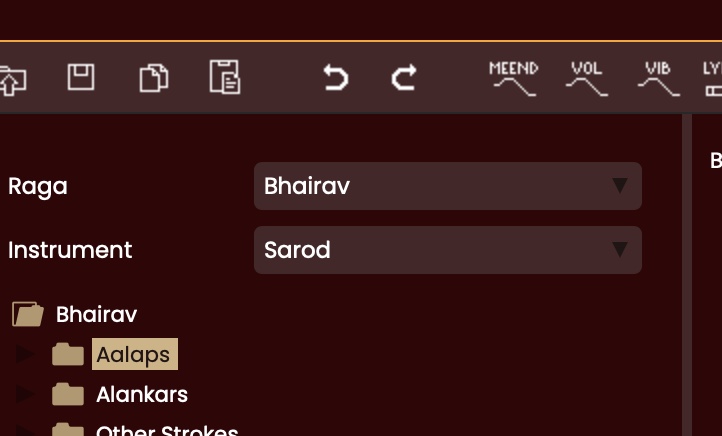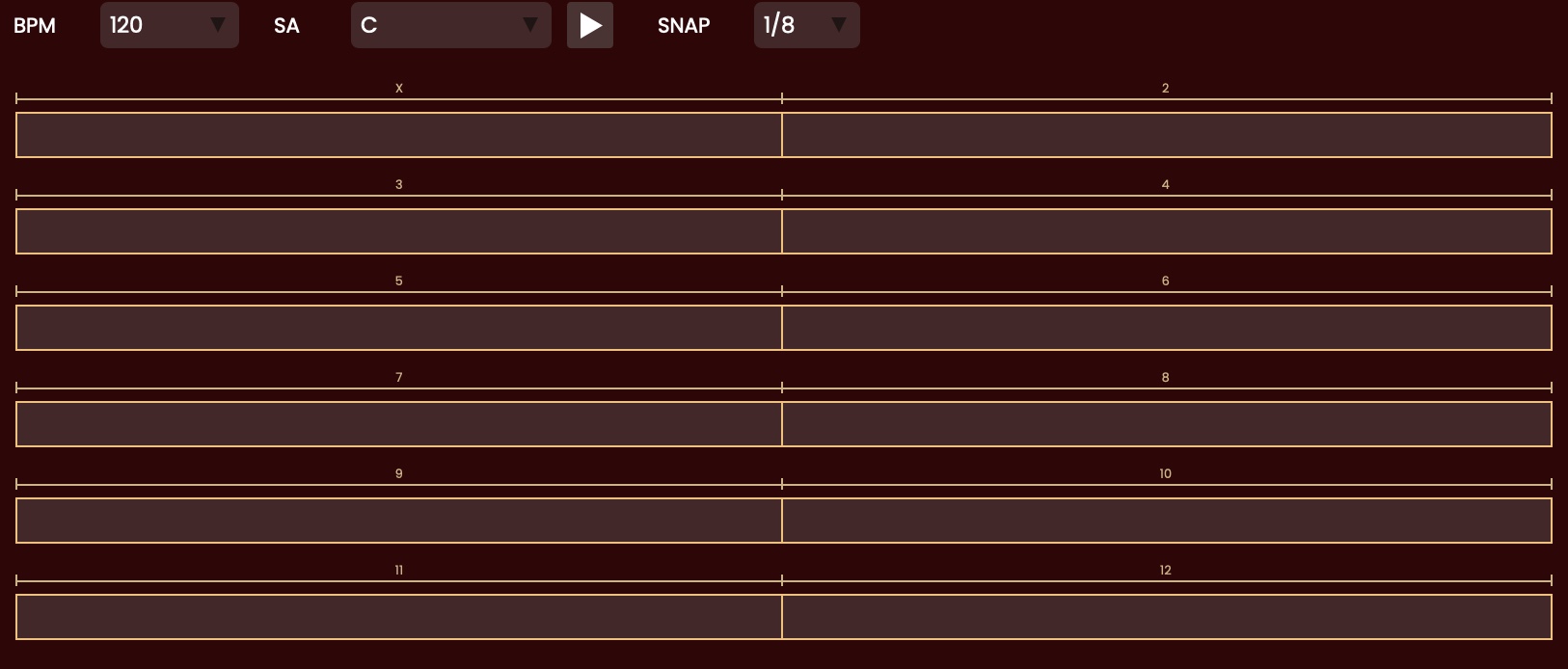
The first step for creating a sequence is to decide for which instrument it's going to be, and possibly in which raga. You can select that in the left pane of Compose panel. If you want to create a rhythmic pattern, only the drum needs to be selected in the Instrument drop-down list. If it's a melody, then select the instrument, and then select the Raga on which you want the melody to be based.

Raga bases are specifically tailored for a specific raga and only
contains notes included in that raga. If you don't need a specific raga,
you can select All instead.
Once you have selected that, you should see the existing components in
the tree view below. Mainly it will contain all strokes or notes items
that can be used to create your sequences. But you usually have other
sequences ready as well.
Now you need to decide in which folder to create your sequence. If you
want to store it in a specific folder that doesn't exist yet, you can
create it by right-clicking on the parent folder, selecting Insert
Folder and then renaming the new folder created as you wish. Repeat the
operation until you have your folder structure ready.
You can now right-click on the destination folder and select Insert Sequence. This will show the following screen:

Here is a short explanation of each field:
A. NAME : Specify the name of the component. This name is displayed in the folder.
B. DESCRIPTION : You can add a short description of the component for your own reference.
C. GHARANA : You can specify the Gharana according to your need. You can
enter the name of the Gharana if you compose following any specific
parameters of a Gharana. If not, specify as NOT APPLICABLE.
D. COMPOSER : You can specify the name of the composer.
E. STYLE : Define your style of song/composition like Thumri, Ghazal, Bandish.
F. REPORTER : Specify the name of the reporter if applicable.
G. CYCLE : Define the Cycle of beats in which your composition is weaved in. For example, Dadra, Keherwa
H. Number of beats : This refers to number of beats in the cycle. If
composed in Dadra, you have to mention 6 in this box as Dadra is of 6
beats.
I. SEQUENCE SIZE : It is the total number of beats of the entire sequence.
J. WRAP AT : Wrap at specifies the number of beats required to be seen in one row.
A 12 beat sequence with a wrap of 12 will be displayed as :

A 12 beat sequence with a wrap of 2 will be displayed as :

K. FROM TEMPO TO TEMPO : This lets you specify the tempos at which your
sequence can be played. It is specially useful if you want to play your
sequence in the Practice pane. In that case, it will only appear when
the selected tempo falls within this range.
L. RESET PITCH EVERY NEW NOTE : By default, SwarShala resets pitch
modulations every time a new note is started (but not between notes that
are modulated as a “meend”). This works for most sequences, but in some
where you want to play an intricate pitch modulation curve, the result
comes a bit choppy. So you may uncheck that option in such cases.